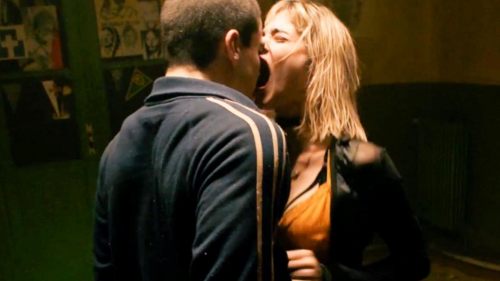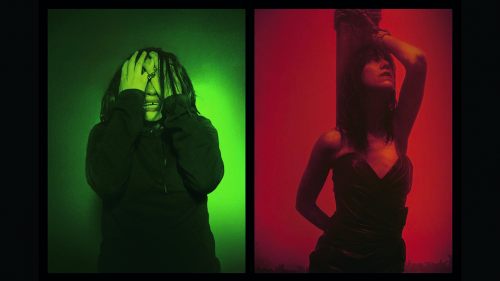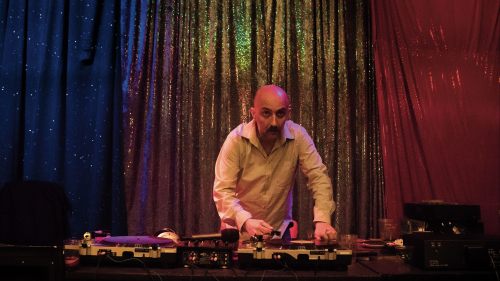The Accessibility Of CLIMAX
Climax has arrived. Get your tickets here!
When Climax premiered at the 2018 Cannes Film Festival, Gaspar Noé was vocal about the audience’s response: he wished that the film had sparked more walkouts. For a filmmaker who’s not just prone to evoking a strong reaction, but has become accustomed to doing so, that’s hardly surprising. For a filmmaker gleefully eager to provoke and challenge, even more so.
His desire for Climax has a basis in both logic and merit. Here is the director of I Stand Alone, Irreversible, Enter the Void and Love, this time lending his distinctive perspective to a hallucinogen-spiked nightmare of a dance movie. How could the psychological horror flick’s frenzied frames, rhythmic orgy, and onslaught of movement, mayhem and murder not move the masses woozily and worriedly to their feet? How could it not make them feel like they too were trapped inside a remote French chalet on a snowy night, sipping LSD-laced sangria and swiftly losing all sense of reality?
Climax has the intended impact, even if it doesn’t entice people out of their seats and out of the cinema door in droves. Awash in a sea of writhing bodies, sniping voices and unfurling fears, it’s the ultimate bad trip on the big screen — and that’s a realm that boasts many an entry, Altered States and Fear and Loathing in Las Vegas proving just two examples. Climax is a dance movie literally on acid, though without a trace of the cliché that phrase inspires. It’s a kinetic body horror movie as well, one that finds terror not only in the body’s functions and flesh, but in its abilities. But Climax is something else too; something that’s much more unique in Noé’s filmography. Like its soundtrack filled with '70s, '80s and '90s-era toe-tappers, it’s accessible.
Noé’s idea is simple, and loosely based on a true tale. Compared to his previous work, the setup is instantly easier to digest. Circa 1996, a dance troupe led by choreographer Selva (Sofia Boutella) works through their latest routine to Cerrone’s ‘Supernature’, then blows off steam once rehearsals have finished. The latter involves more dancing, ample drinking and the eventual realisation that there’s something other than booze in each eagerly consumed cup. Noé first introduces his crew, most of whom are street dancers doubling as untrained actors, in to-camera segments — and if his unnerving aims weren’t already clear, the television playing their missives is surrounded by VHS copies of Possession, Salo, Querelle, Suspiria, Hara-Kiri, Zombie and more. Next, he dives into the group’s pulsating movements, delves into their minds through snippets of conversation and bears witness to their basest instincts while they’re unwillingly under the influence.
Just like his idea, Noé’s intention is straightforward also: plunge viewers into his hellish dancescape not just by using every piece of his fancy filmmaking footwork, but by anchoring his style, and the experience it both depicts and conveys, in his concept. He foregrounds the desired effect through genre, making his first all-out horror movie. If you step onto this dance floor, he ostensibly announces, don’t expect to sashay back off of it unscathed. And while he’s not the first to lose himself to the bewitching terror of alluring footwork, a relentless beat and restless visuals — all of which prove primal and instinctive in his hands, as they have before in others — it’s the perfect fit for his talents.
The Argentine-born, French-based director is known for splashing lurid, visceral, daring and difficult torments across screens, whether stepping into the bleak life of a French butcher in I Stand Alone, working through Irreversible’s brutal rape and revenge in reverse, or following Enter the Void’s American drug dealer in Tokyo both before and after he’s shot. Or, in glorious 3D in Love, getting into bed with a threesome, watching their unsimulated lovemaking from the most intimate of perspectives and charting the emotional fallout. His films have turned his name into a label as well as a form of shorthand, evoking a sensation in viewers’ minds on sight and sound alone. Indeed, it operates like the siren that sounds in the opening moments of Climax’s first dance floor track, echoing as both an act of beckoning and as a firm warning.
What Noé isn’t known for is anything that could be construed as commonplace. His dance film may depict a wholesale physical and mental unravelling, and bear more in common with Suspiria than Step Up, and yet it’s still a dance film. His descent into horror might favour the experiential and psychological over traditional bumps and jumps, but death still stalks the movie’s central characters, who, like the audience, endeavour to ascertain its source. And if Noé isn’t known for playing in recognisable territory, then he’s certainly not known for crafting a feature that could be described as accessible — compared to the rest of his output, at least, if not to the filmmaking world at large.
Amidst the auteur’s five features to date, that’s what Climax is: approachable even when it’s thoroughly deranged, and palatable even in its wildest moments. It won’t be giving crowd-pleasing song-and-dance affairs a run for their multiplex money any time soon, but it’s the Noé film that invites uninitiated newcomers, rather than immediately traumatises them. While the notion of an accessible Noé feature might seem counterintuitive, contradictory and oxymoronic, Climax dances across the screen with all of the power that the filmmaker is known for and little of the indulgence. From his instinctive ability to pair music and mood, to the floating, roaming, almost god’s eye camerawork he so visibly adores, to his aesthetic fondness for colour-coding through foreboding lighting and telling decor, to his penchant for repetition, every element within the film’s frames feels utterly essential.
And fun, for viewers whose idea of fun involves a disco inferno more in line with Dante than The Trammps. Or some thoroughly tainted love, a term Noé pre-empts by including the Soft Cell track within the film. Climax sweeps the audience along with it, rather than forces itself upon them. It doesn’t shy away from death or violence or mania, pumping up the volume on each; however it makes the process an intoxicating ride, rather than a blunt ordeal. Indeed, Noé inspires viewers to leap up, just as he wants to — but to move along with the unhinged movie, rather than walk out the door.



